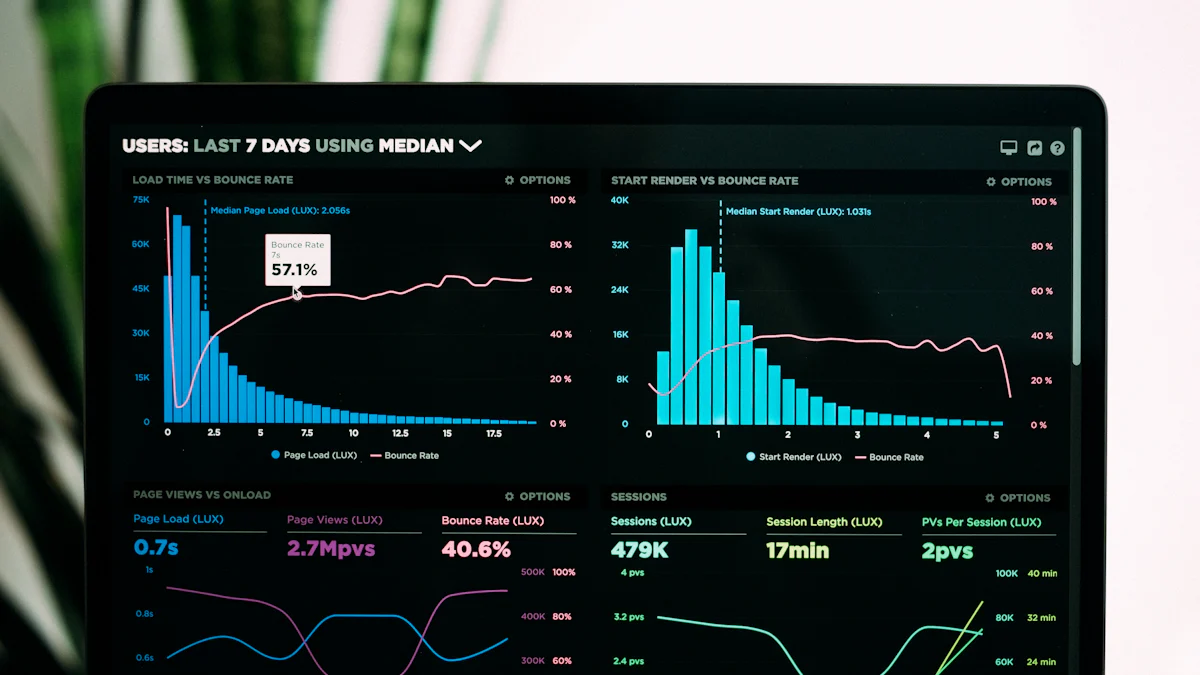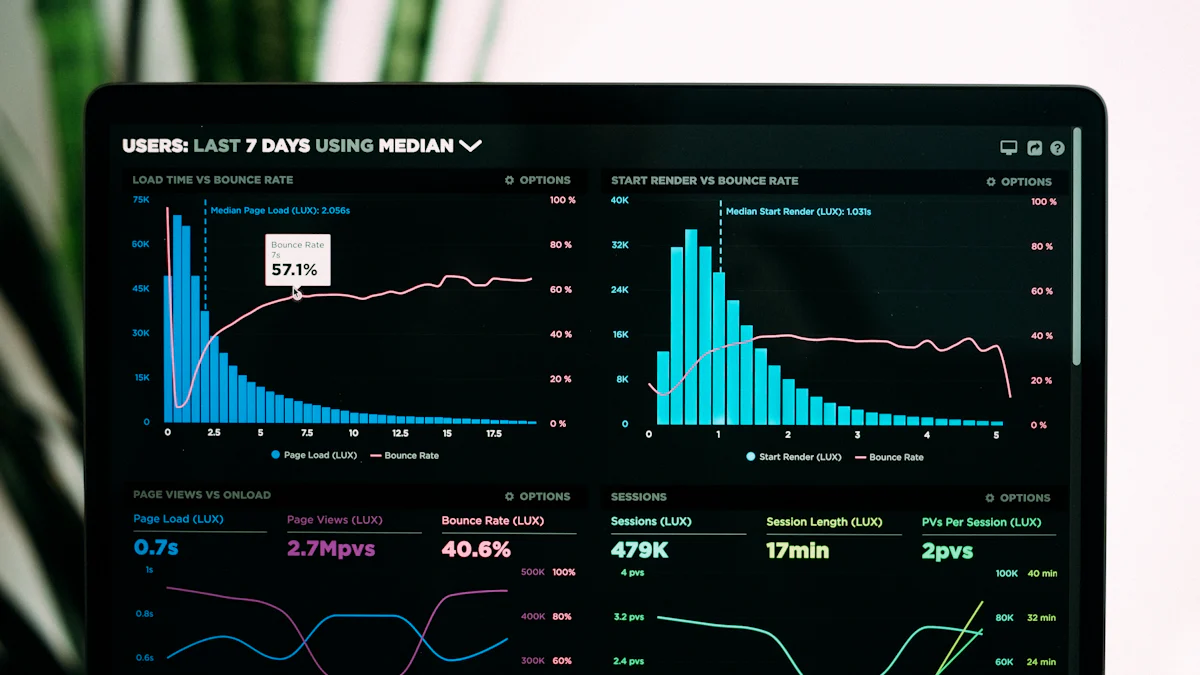
Cosine similarity is a fundamental metric widely used (opens new window) in various fields to measure the similarity between two vectors based on the cosine of the angle between them. Its significance lies in its ability to focus more on direction rather than magnitude, making it invaluable for data analysis tasks. Using Python, one can leverage a range of powerful libraries such as Scikit-Learn (opens new window), Plotly (opens new window), and NetworkX (opens new window) that enable data scientists to calculate and visualize cosine similarity efficiently.
# Data Preparation
When embarking on a data analysis journey, the initial steps of understanding the data and data cleaning (opens new window) are paramount. This process sets the foundation for quality decision-making by ensuring that the dataset is accurate and reliable. Automation plays a crucial role (opens new window) in driving organizations forward with analytics, dashboards, and modeling across various business functions.
# Types of Data
Diving into the realm of data types is essential to comprehend the nature of information being dealt with. Categorically, data can be structured or unstructured, numerical or categorical, static or dynamic. Understanding these distinctions allows for tailored analytical approaches based on the inherent characteristics of each type.
# Data Cleaning
Data cleaning is not merely a routine task but a critical aspect (opens new window) that fosters a culture centered around quality data decision-making. By eliminating inconsistencies, errors, and redundancies within the dataset, analysts can ensure that subsequent analyses are based on accurate and reliable information. This meticulous process enhances the integrity of insights derived from the data.
# Data Transformation
Once the data is thoroughly understood and cleaned, the next phase involves transforming it into a format conducive to analysis. Techniques such as TF-IDF vectors (opens new window) and Word2Vec implementation (opens new window) play pivotal roles in converting textual data into numerical representations suitable for cosine similarity calculations.
# Cosine Similarity Calculation (opens new window)
To delve into the realm of Cosine Similarity Calculation using Python, data scientists can harness the power of various libraries to streamline the process. By leveraging tools like Scikit-Learn and PyTorch (opens new window), analysts can efficiently compute similarity metrics between vectors, enabling them to extract valuable insights from their datasets.
# Using Python Libraries
When it comes to calculating cosine similarity, Scikit-Learn stands out as a versatile library that offers a wide range of functions for machine learning tasks. By utilizing its built-in modules, analysts can effortlessly compute cosine similarity scores between vectors with just a few lines of code. On the other hand, PyTorch provides a robust framework for tensor computations and offers the CosineSimilarity() method to calculate similarity between tensors effectively.
# Scikit-Learn
Scikit-Learn simplifies the process of cosine similarity calculation by providing ready-to-use functions.
Analysts can leverage Scikit-Learn's intuitive interface to perform complex similarity computations effortlessly.
# PyTorch
PyTorch's CosineSimilarity() method facilitates efficient computation of cosine similarity between tensors.
By utilizing PyTorch's powerful capabilities, analysts can handle large-scale data with ease while ensuring accurate results.
# Practical Examples
Incorporating practical examples is essential to illustrate the application of cosine similarity in real-world scenarios. By showcasing code snippets and explaining the results obtained, analysts can gain a deeper understanding of how this metric influences data analysis processes.
# Code Snippets
Utilize Python scripts to calculate cosine similarity scores between vectors.
Implement custom functions to tailor the cosine similarity calculation based on specific requirements.
# Explanation of Results
Interpret the computed cosine similarity values to derive meaningful insights from the data.
Illustrate how these results impact decision-making processes in various domains such as recommendation systems and natural language processing tasks.
# Visualization
# Using Plotly
Plotly is a versatile and user-friendly Python library that empowers data scientists to create visually appealing graphs and charts. With its interactive capabilities, Plotly facilitates the exploration of complex datasets through dynamic visualizations. By leveraging Plotly, analysts can effectively communicate insights derived from data, making it an indispensable tool for data visualization tasks.
# Line Plots Using Plotly
Line plots are a powerful visualization technique used to showcase trends and patterns in data over time or across different categories. Through Plotly, analysts can effortlessly create interactive line plots that provide a comprehensive view of how variables evolve. These plots enable users to identify correlations, anomalies, or recurring patterns within the dataset with ease.
# Scatter Plots
Scatter plots are instrumental in displaying relationships between two variables by representing data points on a Cartesian plane. Plotly offers a seamless way to generate interactive scatter plots that allow for detailed exploration of individual data points. Analysts can uncover clusters, outliers, or trends within the data through these visually engaging representations.
# Using NetworkX
NetworkX is a robust Python library tailored for creating, analyzing, and visualizing complex networks and graphs. Its intuitive interface and extensive functionality make it an ideal choice for generating interactive graphs that depict intricate relationships between entities. By harnessing the capabilities of NetworkX, analysts can delve into network structures and unveil hidden patterns within interconnected data sets.
# NetworkX to Create Interactive Graphs
Utilizing NetworkX, analysts can craft interactive graphs that offer a dynamic perspective on network connectivity and node relationships. These interactive visualizations enable users to explore clusters, centrality measures, or community structures within networks effectively. By leveraging the features of NetworkX, analysts can gain valuable insights into network dynamics and optimize decision-making processes based on these findings.
# Visualising Similarity Clusters
Visualizing similarity clusters is paramount in understanding the grouping patterns present in datasets based on similarity metrics. With NetworkX, analysts can visualize similarity clusters within networks to identify cohesive groups or related entities efficiently. By employing advanced algorithms provided by NetworkX, analysts can uncover hidden similarities and dependencies among data points, paving the way for enhanced analysis outcomes.
Cosine similarity, a potent mathematical method effective for text data analysis, finds applications in Information Retrieval, Machine Learning, and SEO.
Its ability to determine similarity between objects (opens new window) or documents makes it critical across various domains.
Document similarity analysis (opens new window) heavily relies on cosine similarity for accurate comparisons.
This method measures the angle between vectors (opens new window) for comparison purposes.
Robust to changes in vector magnitudes (opens new window), cosine similarity captures directional aspects efficiently.
Widely used in Data Science and Machine Learning applications due to its proven worth in text similarity, recommendation systems, image processing, and anomaly detection.
Valuable for sparse data applications as it ignores 0-0 matches and is commonly used to measure document similarity in text analysis.



